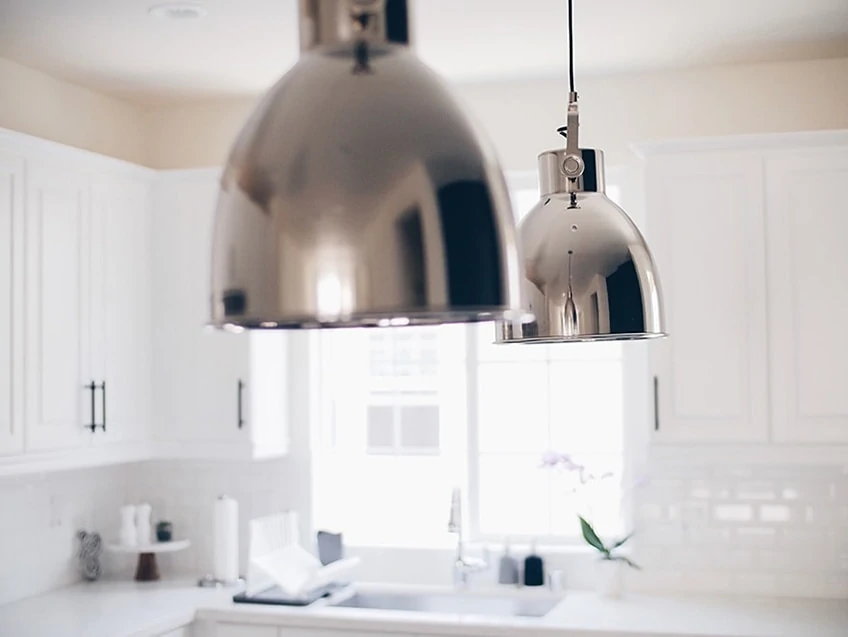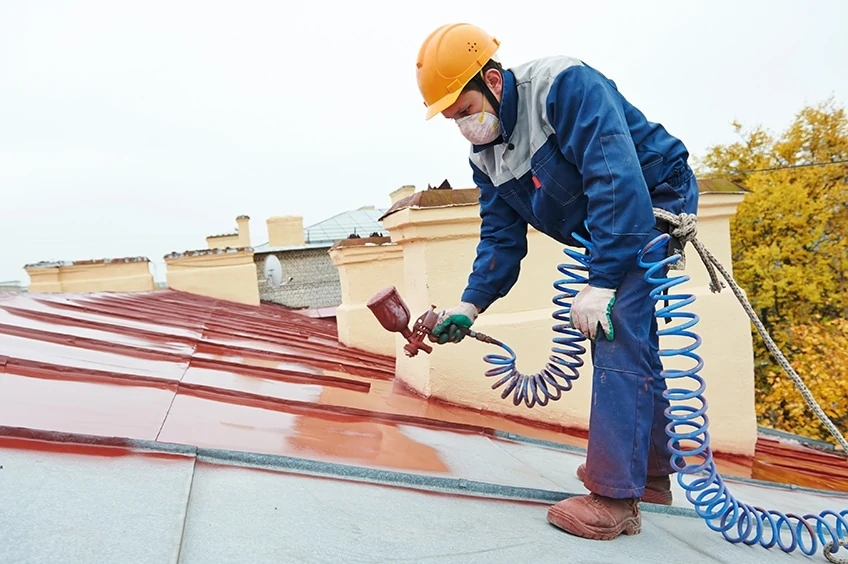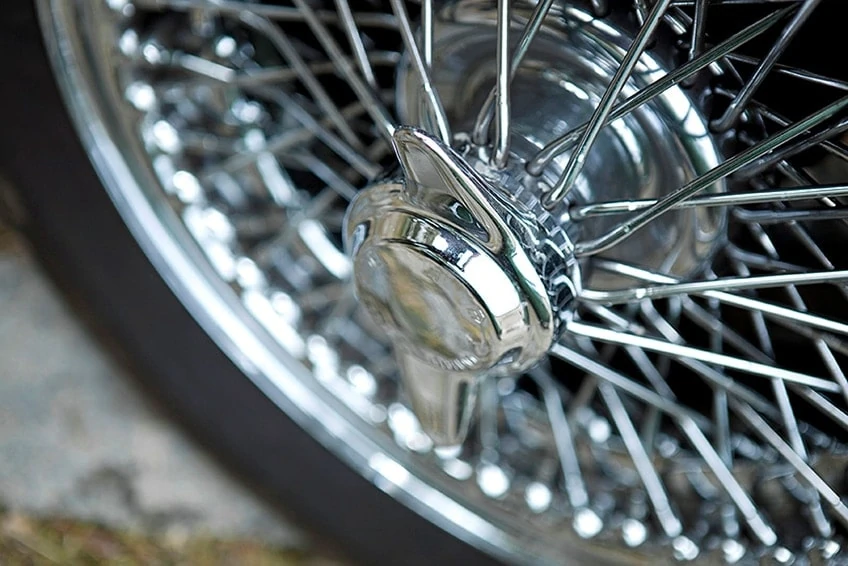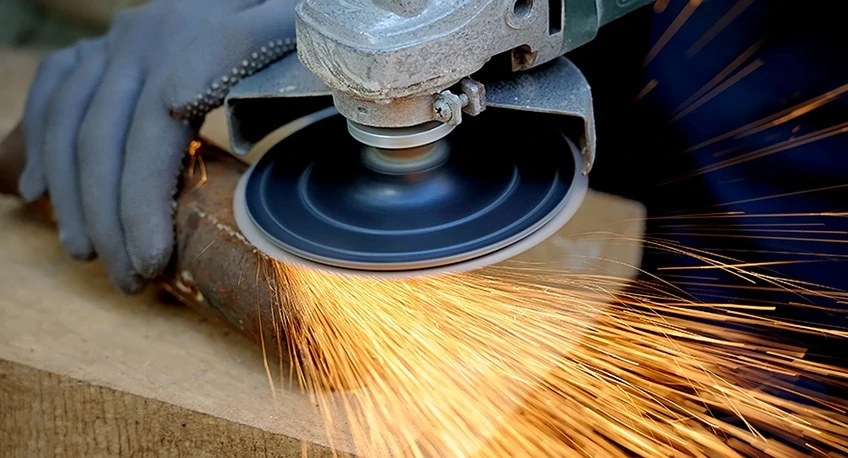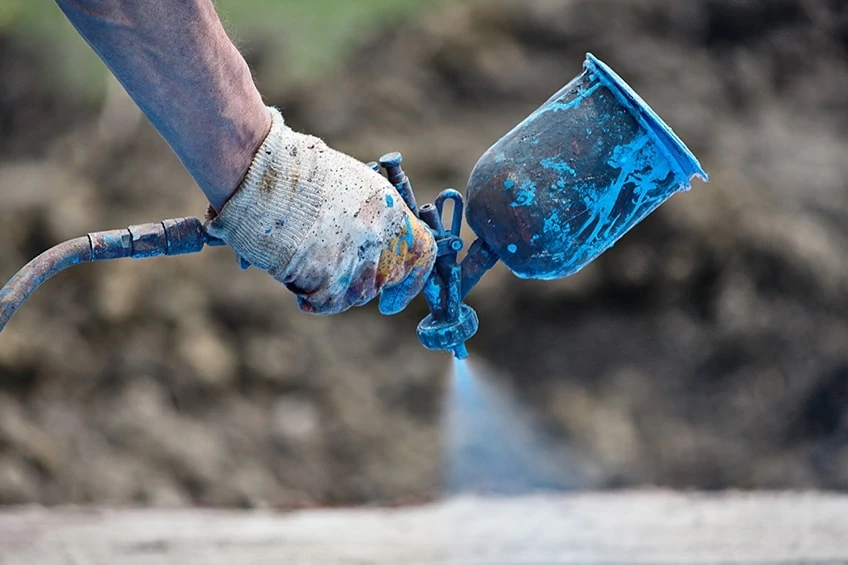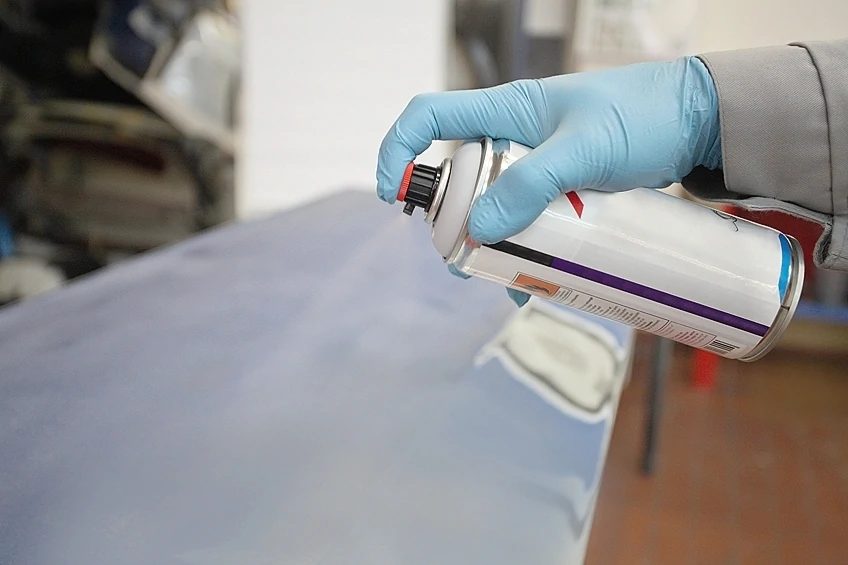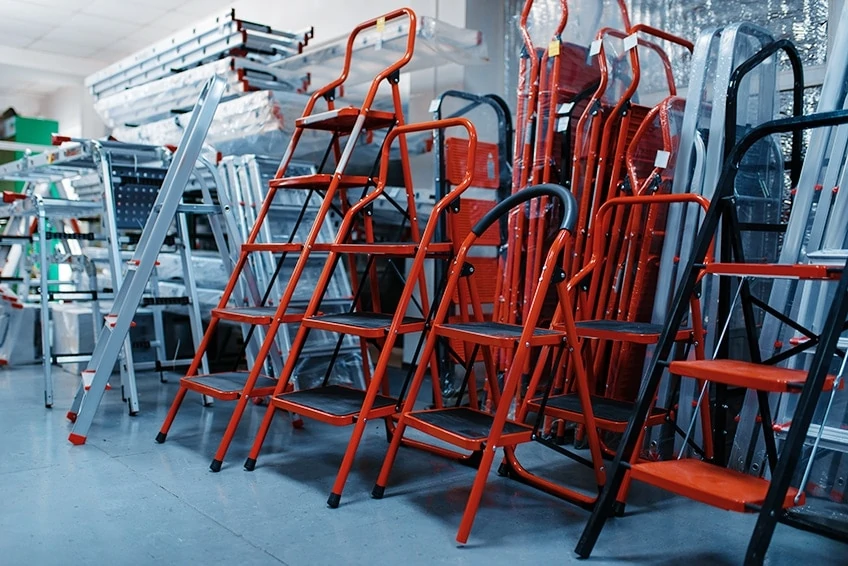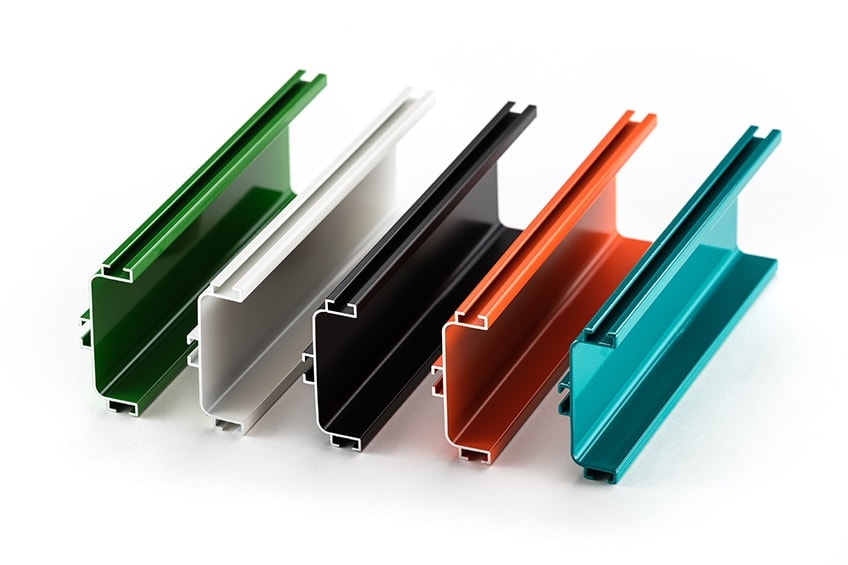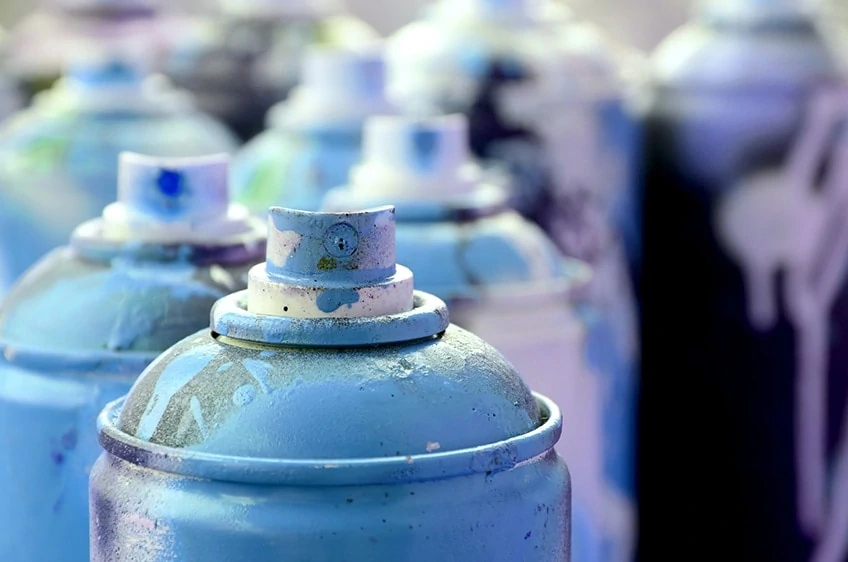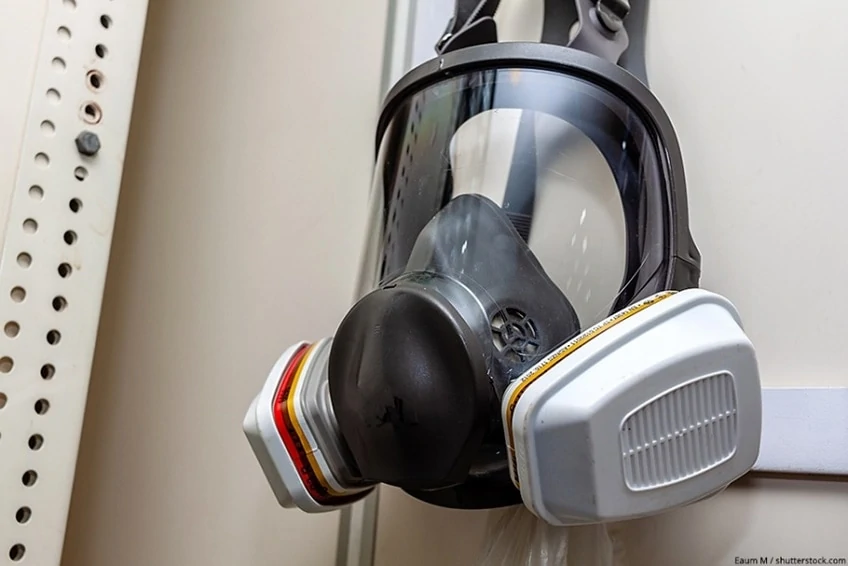How to Paint Aluminum – Instructions for Aluminum Painting
This post may contain affiliate links. We may earn a small commission from purchases made through them, at no additional cost to you. You help to support resin-expert.com
Aluminum is a non-ferrous metal that does not actually require painting at low loads. This is because it automatically surrounds itself with a layer of aluminum oxide, which then acts as a protective layer againstt weather-related influences. Why painting aluminum can still be useful in some situations and which aluminum paint is best to use, we tell you in our aluminum paint test and guide below.
Table of Contents
- Applications for Aluminum Paint
- Difference Between Anodized and Non-Anodized Aluminum
- Materials Needed for Painting Aluminum
- Recommended Coatings for Aluminum
- What to Look for When Buying Primer and Paint for Aluminum
- How to Paint Aluminum
- Tips and Tricks for Painting Aluminum
- Aluminum Paint Safety Instructions
- Frequently Asked Questions
Applications for Aluminum Paint
Unlike many other metals, aluminum does not necessarily have to be protected from external influences. It automatically forms a protective aluminum oxide layer. This layer renews itself regularly, provided it is abraded.
However, this layer is not of high optical quality. It has a dull gray color that does not create a particularly aesthetic impression. Therefore, in various situations, it may be useful to apply aluminum paint to make the material look more visually appealing.
Apart from this, processing with aluminum paint is also useful when the non-ferrous metal comes into contact with chemicals with a high pH value. If this is 8.5 or higher, you should paint the aluminum.
Also, if the aluminum is in regular contact with brass, bronze, copper and steel under the influence of moisture, it should be protected with a high-quality aluminum paint.
Difference Between Anodized and Non-Anodized Aluminum
Anodizing is a surface pretreatment of aluminum, which in its early days was referred to as “anodic oxidizing”. In this process, an oxide layer is applied to the material by means of an electrochemical process. This is formed from the aluminum used instead of being applied externally.
The advantage is that the material is more or less fused with its protective layer – the latter is integrated into the aluminum and protects it not only from the outside, but also from the inside. The layer thicknesses vary from five to 25 micrometers depending on the intended use of the aluminum: The higher the stress on the component will be, the thicker the anodized layer should be.
Anodized aluminum is extremely resistant to weathering and corrosion. The appearance of the material is preserved longer and the longevity is effectively increased.
If you want to paint anodized aluminum, then thorough surface preparation is essential. This is because in order to paint anodized aluminum, the protective oxide layer must be fully ground off, for example by sandblasting. How exactly you can paint anodized aluminum, we will tell you in detail in a later section.
If it is purely about the appearance of the material instead of painting the aluminum, you can have it anodized again. It is possible to choose different colors.
Materials Needed for Painting Aluminum
The following materials are needed for aluminum painting.
- Sandpaper and/or sanding fleece
- A suitable degreaser, such as methylated spirits, acetone, or a cleaning agent from the trade
- The paint
- Foam roller, brush, or spray gun, depending on which tool you want to use
Recommended Coatings for Aluminum
We have carried out an extensive aluminum paint test and list below what we deem to be the best primers and paints.
Best Aluminum Primer: RUST-OLEUM Stops Rust Flat Aluminum Primer
This aluminum primer from the well-renowned Rust-Oleum brand offers a durable, weather- and corrosion-resistant coating that has been formulated specifically for use on aluminum galvanized metal. With a water-based acrylic formula, this primer will dry much more quickly. The flat, gray finish you end up with will provide not only durability and protection, but also the ideal base for adhering to other materials and topcoats, such as paint.
- Weather- and corrosion-resistant primer bonds tightly to all surfaces
- Water-based acrylic formula provides a durable protective coating
- Specially formulated for use on aluminum galvanized metal
PROS
- Specially formulated to be used on aluminum galvanized metal
- Resistant to weather and rust
- Highly durable
- Quick-drying
- Forms the perfect base for a wide variety of further applications
CONS
- Quality of the can itself is questionable
We can give the Rust-Oleum Stops Rust primer a confident recommendation!
Best Paint for Aluminum: RUST-OLEUM Stops Rust Protective Enamel Paint
Another option from the trusted Rust-Oleum brand, this enamel paint is available in a wide range of colors and finishes from which to choose. This oil-based coating is extremely durable and will resist weather and corrosion with great efficacy. This product dries quickly and will protect your aluminum surface from fading, scratches, marks, and chips. You will receive fantastic coverage and color pigmention with this paint.
- Durable and versatile coating is resistant to weather and corrosion
- Oil-based formula protects against abrasion, fading, and chipping
- Glossy, semi-gloss, or flat finish provides a fresh shine to surfaces
PROS
- Many colors and finishes to choose from
- Oil-based coating, making it much more durable
- Highly resistant to rust, weather, abrasions, marks, and chipping
- Dries quickly
- Great coverage
- Fade-resistant color
CONS
- Strong odor
- Color of final finish may differ to what is shown on the tin
Despite these two disadvantages, we can recommend this aluminum paint from Rust-Oleum with a clear conscience.
All-in-One Aluminum Paint and Primer: RUST-OLEUM Painter’s Touch 2X Ultra Cover Paint and Primer
Finishing strong with one final Rust-Oleum recommendation, this spray is an aluminum paint and primer all in one. As with the above-mentioned products, this paint/primer combo can be used on a wide variety of surfaces, including aluminum metal. The formula has an oil base, offering great durability and lasting protection. The paint dries quickly, will effectively hide any imperfections on the surface, and is resistant to chipping. On top of all of this, you do not have to worry about a strong odor with this product. Spray this aluminum primer/paint from any angle and explore your creativity with the wide selection of colors.
- Oil-based formula is durable and provides lasting protection
- Low odor, resists chips, and provides excellent hide
- Can be sprayed from any angle and will dry quickly
PROS
- Superior coverage
- All-in-one primer and paint
- Low odor
- Durable and long-lasting
- Resists chipping
- Excellent hide ability
- Good range of colors
- Quick-drying
CONS
- Nozzles may clog
Based on the advantages, which clearly outweigh the disadvantages, we can give this aluminum primer-and-paint combo our thumbs-up.
What to Look for When Buying Primer and Paint for Aluminum
Which paint you choose for aluminum depends on the loads to which the material is to be subjected. If it is only a matter of appearance and the loads are not very high, you can choose a one-component paint for lower stresses.
Two-component coatings for aluminum or powder coatings are recommended wherever the material is exposed to high weather-related and mechanical influences. This is the case, for example, with aluminum components used in boat building.
Two-component coatings are more expensive than single-component aluminum coatings, but the investment is worthwhile. They have a much higher resistance to solvents and other external influences. One disadvantage is the fact that two-component coatings must be mixed in a perfect ratio and applied quite quickly. The processing time is often very limited.
If you are working with a primer and an aluminum paint, make sure that they are compatible with each other. It is best to use products from the same manufacturer.
How to Paint Aluminum
In principle, the same must be observed for surface preparation before aluminum painting as for aluminum bonding: The protective oxide layer must first be removed completely before the paint can be applied. However, this is not so easy, especially on larger surfaces, as the oxide layer renews itself at regular intervals.
Aluminum Grinding as Surface Preparation
To remove the oxide layer, there are several mechanical options: You can grind the aluminum or sandblast it. The latter is costly, but recommended especially for large surfaces.
Furthermore, you can remove the oxide layer chemically, but this is not necessarily beneficial to one’s health. The optimal way to prepare the surface is sanding with sandpaper.
Here, you can proceed roughly or choose to give the aluminum a high-gloss finish by polishing the surface. In the latter case, use a coarse grit first and then, gradually, a finer and finer grit, sanding the surface in at least four steps. In the case of a high-gloss polish, however, the aluminum should only be finished with a polishing paste and then with an aluminum clear coat instead of being painted in several steps.
For aluminum painting, it is sufficient to remove the oxide layer with sandpaper that has a coarse grit. Before sanding, dust and dirt should first be carefully removed, otherwise sanding could introduce dirt into the material. Even after sanding, the resulting dust must be removed again.
For the subsequent degreasing of the surface, spirits are recommended. Apply some with the lint-free cloth and rub the entire surface with it. Be sure to wear gloves, as the finger grease can also affect the adhesion of the paint.
Apply Aluminum Primer
Before applying the paint, an aluminum primer should be applied. Aluminum is one of the metals that are difficult to paint, as paints hardly adhere to the surface.
A so-called primer, also called an adhesion promoter, ensures better adhesion of the aluminum paint. The primer can be applied with a spray gun, roller, or brush.
Application of the Aluminum Paint
Now you should wait until the aluminum primer is completely dry. After that, you can paint the aluminum. This step can be done differently, depending on the aluminum paint used. In any case, study the manufacturer’s data sheet beforehand.
Two-component aluminum paints are available in which a finish is already included. For all other paints, a multi-coat application is recommended to ensure that the surface is optimally sealed. When applying the finish, the compatibility of the products used must be ensured.
Apply the aluminum coating using a roller in a crosswise direction. This means that the paint is quickly applied first in the longitudinal direction, then in the transverse direction, and again in the longitudinal direction. This is done without picking up new paint. Immediately afterwards, the freshly applied paint is smoothed with the brush. The brush is held at a slight angle and smoothes the surface, which will look somewhat bubbly. If brush marks appear on the fresh paint during this process, this is of no consequence: During the drying phase, the paint will stretch, which eliminates the brush marks.
Multi-Layer Coating Application
If you do not have a 2-in-1 product, you will need to apply the coating in several layers. Thus, the following procedure is recommended: Allow the primer coat to dry thoroughly, usually for 24 hours. Then, lightly sand the varnish. To do this, use a fine-grit sandpaper. Then apply another coat of varnish. Proceed in this way until all layers have been applied.
Afterwards, apply a durable paint for aluminum. This protects the material even better.
Painting Anodized Aluminum
Painting anodized aluminum is not as easy to accomplish as it is with its non-anodized counterpart. We have already mentioned that anodized aluminum has a special protective layer, so to speak, which is extremely durable against external influences.
The disadvantage of this is that anodized aluminum must be very well sanded before painting – the anodized layer must be completely removed. Otherwise, there is a risk of rapid chipping of the paint, if it holds to it at all.
Removal of the anodized layer works best by mechanically sandblasting or the glass bead blasting process. The latter is best carried out by specialist personnel. It should be noted that aluminum must be very smooth for many applications. Sandblasting, however, produces a very rough surface, which you absolutely must polish thoroughly. With the glass bead blasting process, this step is omitted, since a smooth surface is created in the process.
In addition to mechanical removal of the anodized layer, there is another possibility, namely chemical removal. Nitric acid is often used for this, but we would advise against this for private users for health reasons.
A little insider tip is to remove the anodized layer with the help of a commercially available pipe cleaner. This should contain about 20% sodium hydroxide. Put the pipe cleaner in a stable container so that its bottom is covered to a height of about three millimeters, and fill the container about two-thirds full with warm water. Then stir until the powder is dissolved and immerse the aluminum component in it. Swirl it a little and wait until the water-pipe cleaner mixture has changed color. Please use only plastic tongs for this purpose; never use your bare hands, as the mixture is highly corrosive.
Only a few seconds after immersion, the anodized layer will have already been removed. Now rinse the component thoroughly under warm, running water. Any residues of the anodized layer can then be rubbed off with a household sponge.
Occupational safety is of essential importance in this procedure. As noted, the mixture is very corrosive. Please carry out this work outdoors only and with due regard for your own safety. Wear robust gloves, a respirator, and protective goggles. Never touch the mixture with your bare hands! We only reveal our secret tip with reservations, assume no liability, and emphasize once again how important occupational safety is here!
Tips and Tricks for Painting Aluminum
When painting aluminum, the utmost care must be taken to ensure cleanliness. After it has been polished, every last speck of dust can be seen on it, and will become incorporated into the paint during the painting process. Before varnishing, the surface should therefore be wiped again with a lint-free cloth.
What applies to wood varnishing can also be applied to aluminum varnishing: Hairy brushes are a no-go. On painted wood, every hair is visible; on painted aluminum, even more so. In any case, make sure you use high-quality brushes that have been specially developed for painting.
Also, never use sandpaper or cloths that were previously used for other metals. Otherwise, the finest dirt and abrasive particles could be incorporated into the aluminum, which could have a lasting effect on not only the appearance, but above all on the adhesion properties and protective function of the paint.
For spray painting, which is particularly recommended for hard-to-reach areas, the same rules for pretreating the substrate apply as for painting.
Aluminum Paint Safety Instructions
In general, working with paints, adhesives and varnishes is not without danger. Be sure to pay attention to your personal safety. Your equipment should include the following items:
- Long-sleeved clothing
- A respirator mask
- Safety goggles
- Disposable gloves, preferably made of nitrile
It is also best to work outdoors. If this is not possible, ensure that your workplace is optimally ventilated. The painted objects sometimes still need to evaporate in order to lose their unpleasant odor. Ensure sufficient ventilation during this phase as well.
The varnishes used should never come into contact with your mucous membranes and eyes. If this does happen, immediately wash the affected area thoroughly and consult a doctor immediately afterwards. Show him the data sheet so that he can find out about the ingredients and initiate the best possible treatment.
Frequently Asked Questions
What Is the Best Paint for Aluminum?
This depends on the use of the aluminum component. For weaker stresses and a high-quality appearance, a one-component aluminum paint is recommended, but for heavy stresses you should use a two-component paint.
What Is the Best Aluminum Primer?
To prime aluminum, a special aluminum primer is recommended. A universal primer would not adhere well to the aluminum, even after sanding.
How Do You Protect Aluminum?
There are several ways to do this. Aluminum can be anodized (even in any color), it can be primed, and it can be painted or powder coated. This also often depends on the intended use of the aluminum component.
How Do You Paint Aluminum Alloy Wheel Rims?
In principle, the same procedure applies to aluminum rims as to all aluminum parts. Thorough surface preparation is important, along with ensuring that the last coat of paint is completely dry before applying the next. Incidentally, there is no salvaging rim damage deeper than two millimeters – these represent a safety risk when driving and the affected rims must be disposed of.
Can Aluminum Be Powder Coated?
Yes, you can powder-coat aluminum. This option, in addition to aluminum painting and anodizing, represents a particularly high-quality protection against chemical, weather-related, and mechanical influences.
Can you Paint over oxidized Aluminum?
Yes, oxidized aluminum can be repainted if the surface is thoroughly cleaned and sanded before an aluminum primer coat and paint are applied.
Painting aluminum is no problem, even for inexperienced do-it-yourselfers, as long as various things are observed. Just follow our aluminum paint guide and you too will be able to paint your aluminum parts without any major problems.


